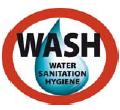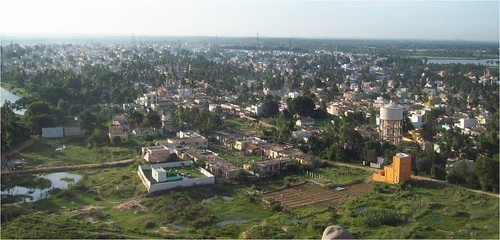Sanitation
Draft report on the exploratory study on wastewater irrigation in Gujarat by People in Centre Consulting edisha newsletter for January 2013 from Consortium for DEWATS Dissemination Society CDD
Posted on 22 Nov, 2014 10:30 AMArticle and Image Courtesy: Consortium for DEWATS Dissemination Society

Water sanitation and health situation in select villages of Nadia district West Bengal
Posted on 22 Nov, 2014 10:30 AMGuest post: Veena Khanduri, India Water Partnership
The Gangetic river basin in Eastern India receives heavy monsoon rainfall, much higher than the rest of India. Nonetheless, the region suffers from both the problem of year round water availability as well as poor quality of drinking water. Due to excessive exploitation, the groundwater aquifers in the region have been depleting alarmingly, surface water is highly limited & poorly maintained and consequently cannot count up as a major source of safe drinking water.
Process of formation of Jajmau Area Water Partnership in Kanpur Uttar Pradesh : Problems and solutions
Posted on 22 Nov, 2014 10:30 AMIndustrial effluents and sewage water are being diverted to the river Ganga by the cities and towns through which it passes. Nestled on the banks of Ganga, Kanpur, a highly urbanized and industrial city is polluting it most. Apart from the Government of India’s recently constituted National Ganga River Basin Authority, civil societies and NGOs too are putting rigorous efforts to make Ganga pollution free. Though the city has several big and small industries, the leather industries located in Jajmau, the oldest part of the city add to the problem of pollution in the river to a large extent.
Report on Greening of the NRDWP News and Policy Update from India WASH Forum eNewsletterDec 2012
Posted on 22 Nov, 2014 10:30 AM Gender in WASH: Misplaced perspective in WASH sector
Gender in WASH: Misplaced perspective in WASH sector
Is your neighbourhood a dirty picture -The growing garbage crisis and 10 ways in which you can help
Posted on 22 Nov, 2014 10:30 AM‘A potato peel, a piece of paper and a plastic packet’: The story of garbage
Let’s begin with a story of the journey of our junk, in a typical Indian city.
National water policy views water as an economic good- Resistance shown by civil society with the move towards increasing the water and sewerage tariff Bimonthly newsletter by India WASH Forum
Posted on 22 Nov, 2014 10:30 AM

This edition of the India WASH Forum has the following highlights:
An analysis of 2011 census data on household amenities with respect to drinking water sources and latrine facilities in urban areas of the country A document by CPHEEO Ministry of Urban Development
Posted on 22 Nov, 2014 10:30 AMThis document by Central Public Health and Environmental Engineering Organisation , Ministry of Urban Development, is an analysis of 2011 census data on of the drinking water and latrine facilities in urban areas of the country.
Sewerage and sewage treatment Updated manuals on engineering operation and maintenance and management by the Central Public Health and Environmental Engineering Organisation Ministry of Urban Development 2012
Posted on 22 Nov, 2014 10:30 AMThese manuals are prepared by the Central Public Health and Environmental Engineering Organisation (CPHEEO), a department under the Ministry of Urban Development (MoUD).
Impact of pit toilet leachate on groundwater chemistry and role of vadose zone in removal of nitrate and E coli pollutants in Kolar District Karnataka India
Posted on 22 Nov, 2014 10:30 AMGiven the many problems associated with flush toilets and the sewerage system, pit toilets offer a viable solution in India. However, the use of soakpits raises the question of groundwater contamination. This paper assesses the impact of pit toilet leachate on groundwater quality in Mulbagal town (pop ~ 60,000) in Karnataka relies on pit toilets, and uses groundwater for drinking.





